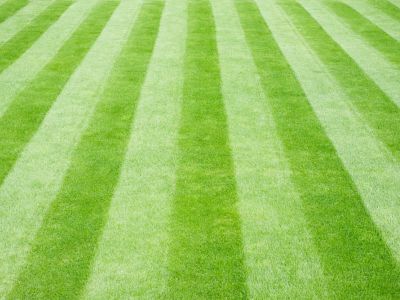Mowing stripes in grass is important for golf courses because the direction the grass is lying can affect how the ball rolls. Striped grass in home lawns is aesthetically pleasing but not necessary. The same holds true for sports fields. The creative striping is a true crowd pleaser, but it does not affect the playability of the field. Nonetheless, you might like to learn how to cut stripes in grass and be the envy of the neighborhood.
How To Mow Stripes in A Lawn
To achieve a striped yard, you must have the proper equipment. To lay the grass a certain direction requires rollers, such as with a reel mower. The newer rotary mowers have a plastic shield on the back that helps press down the blades of grass. And some new models have rollers added on each deck that can deliver stripes. It also is possible to mow first, then follow up with a roller, if you have one. The best striped patterns are achieved with the expensive equipment the professionals use.
To achieve a striped pattern, mow first one direction across the yard, then turn right twice and mow the opposite direction parallel to the first row. Continue alternating parallel rows until the entire yard is complete.
To achieve the checkerboard pattern, mow the striped pattern as specified above. Then, you will make the same alternating, parallel lines but perpendicular to the first set.
To add depth to the checkerboard, go over every other stripe in the first set of stripes in the same direction you did the first time. You can shut off the blades and just use the roller.
While striping a home lawn is not necessary, changing the lawn direction each time you mow can reduce mower wheel ruts and compacted soil, help prevent scalping, and help to avoid a streaked appearance caused by mowing in the same direction.
